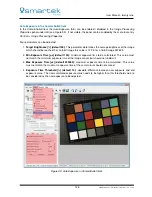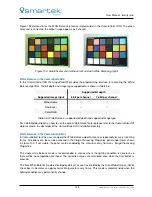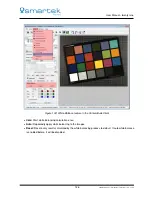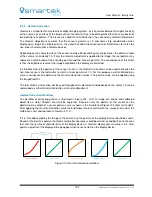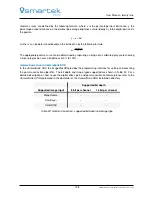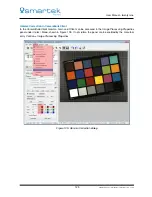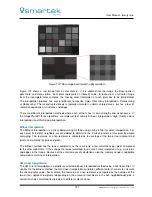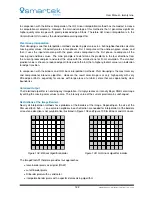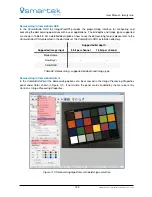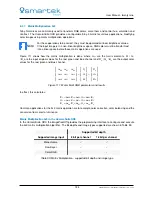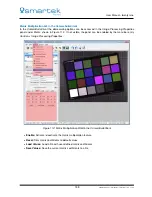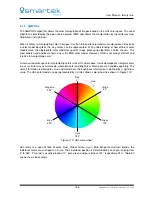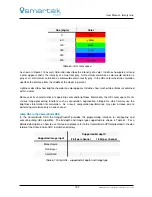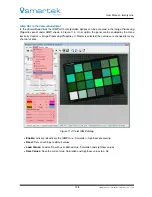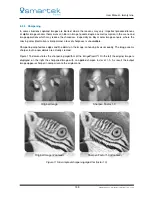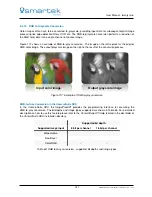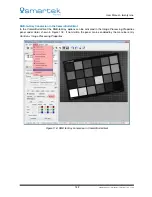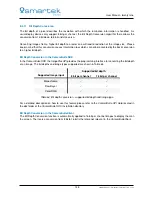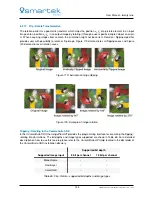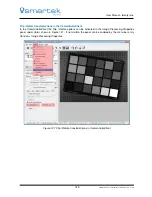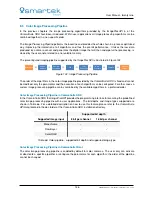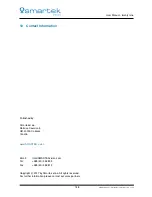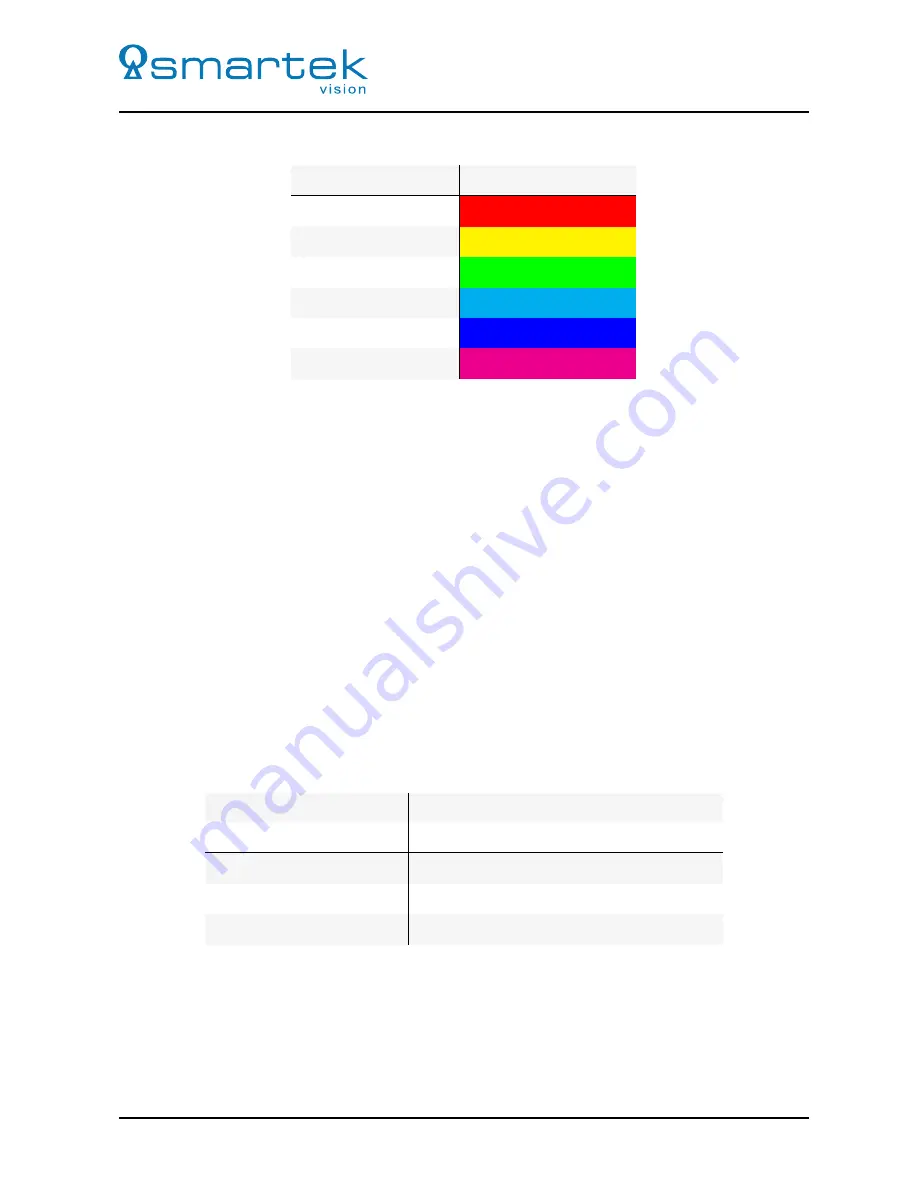
User Manual - twentynine
Hue (angle)
Color
0
◦
red
60
◦
yellow
120
◦
green
180
◦
cyan
240
◦
blue
300
◦
magenta
Table 60: HSL color space
As shown in Figure 113 as well,
Saturation
describes the intensity of a color. It defines how pale or strong
a color appears and is the intensity of a Hue from gray. At maximum saturation a color would contain no
gray at all, at minimum saturation a color would contain mostly gray. In the HSL color wheel the saturation
specifies the distance from the middle of the wheel in percent.
Lightness
describes how bright or how dark a color appears. It defines how much white or black is contained
within a color.
Because of its characteristics of separating color and brightness information, the HSL color space fits for
various image processing functions such as convolution, equalization, histograms, which mainly use the
brightness information for calculation. As a result, computation performance may also increase due to
performing calculation only on one channel.
Gimp HSL in the CameraSuite SDK
In the
CameraSuite SDK
the
ImageProcAPI
provides the programming interface for configuring and
executing
Gimp HSL
algorithm. The bit depth and image type supported are shown in Table 61. For a
detailed description on how to use this feature please refer to the
CameraSuite API Help
located in the doc
folder of the
CameraSuite SDK
installation directory.
Supported bit depth
Supported image input
8 bit per channel
16 bit per channel
Monochrome
Raw Bayer
Color RGB
X
Table 61: Gimp HSL - supported bit depth and image type
137
SMARTEK Vision | User Manual - twentynine | Doc. v1.0.2

